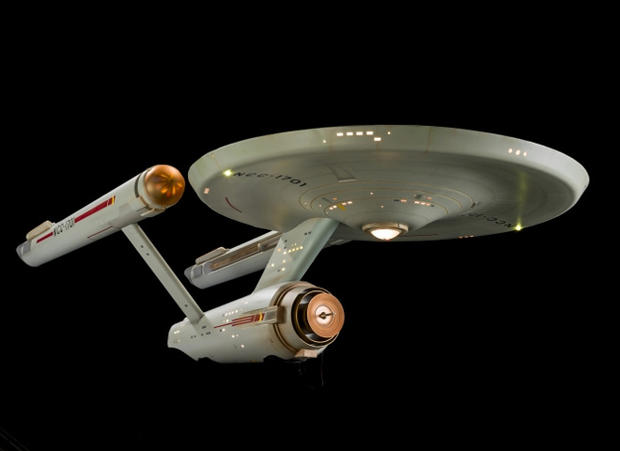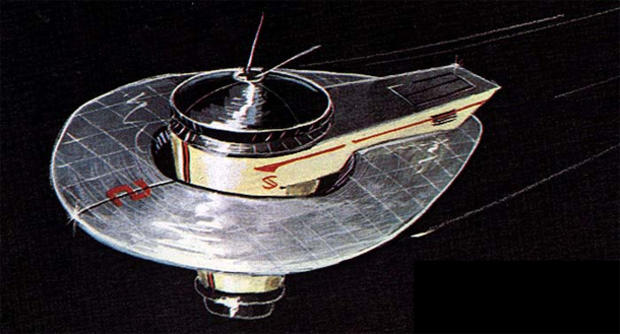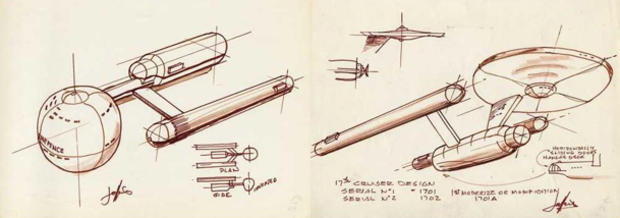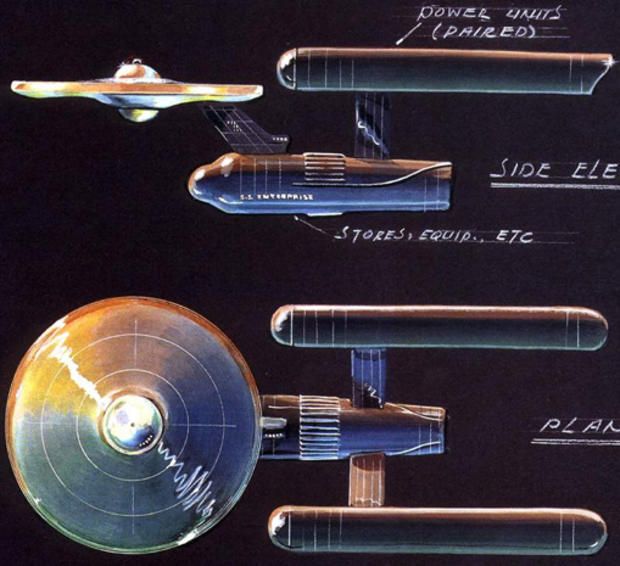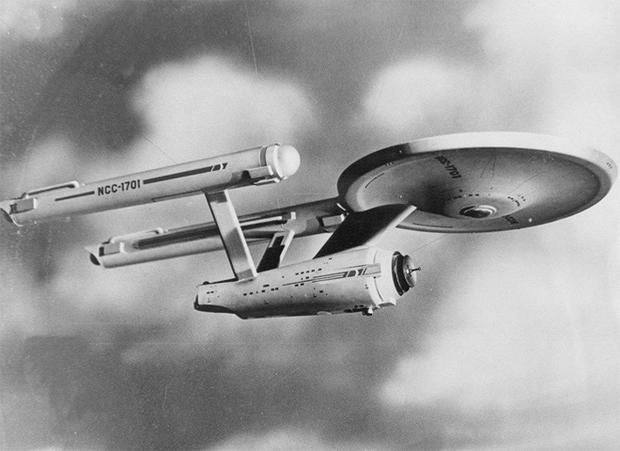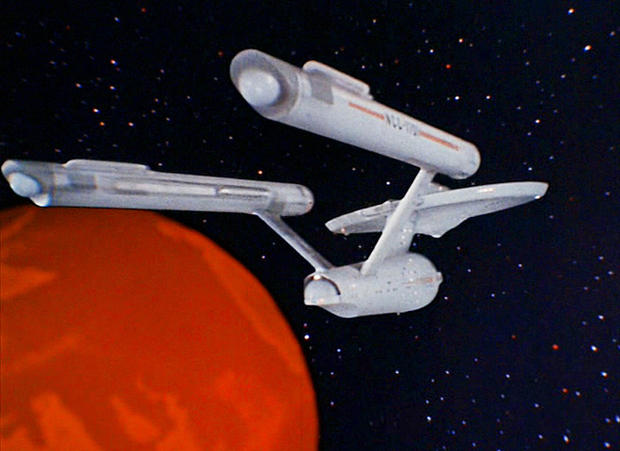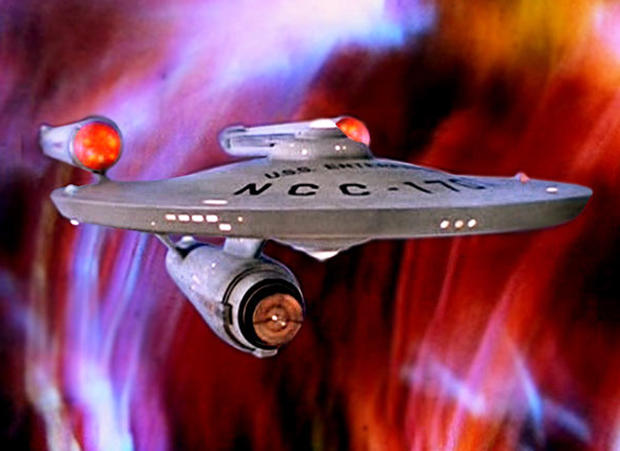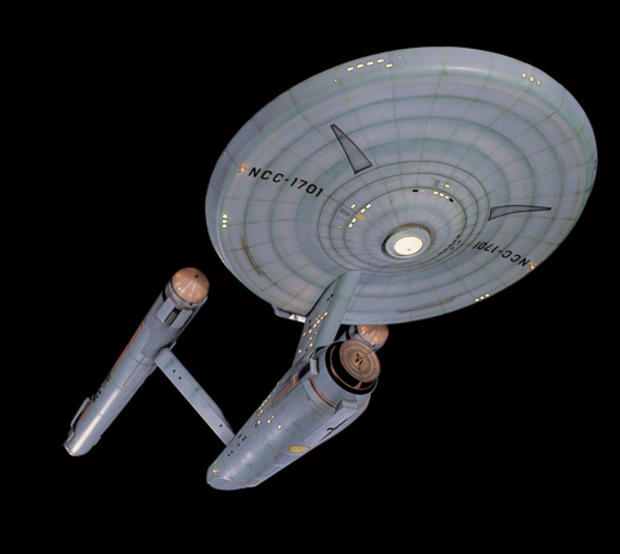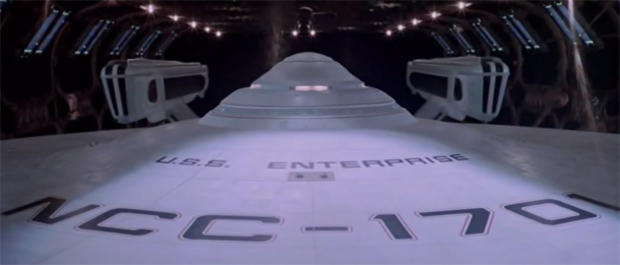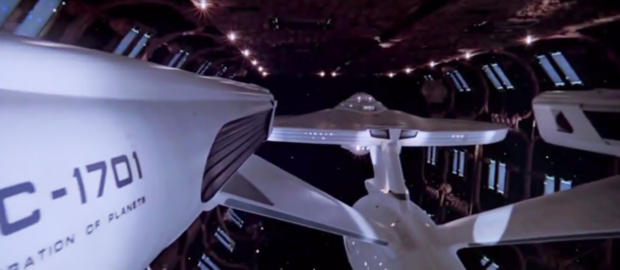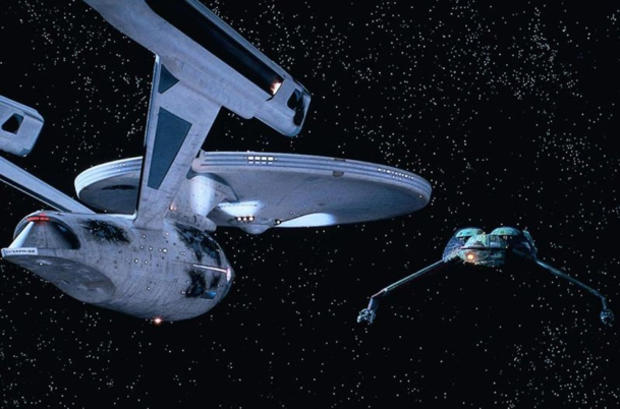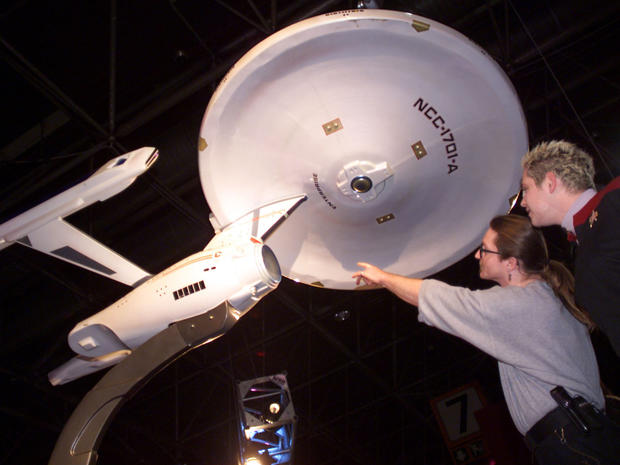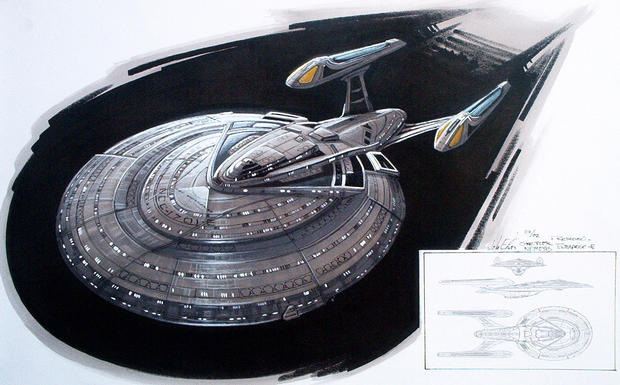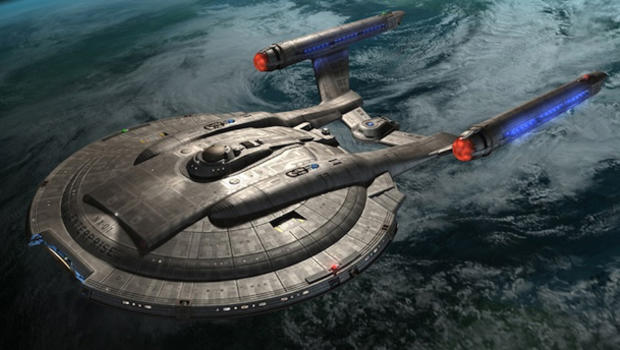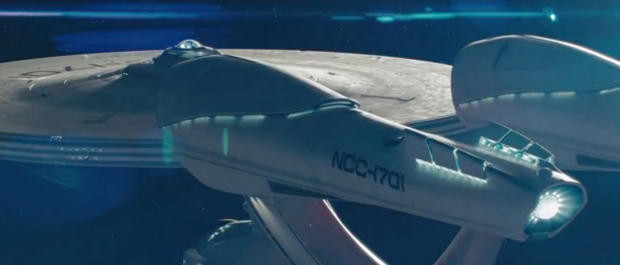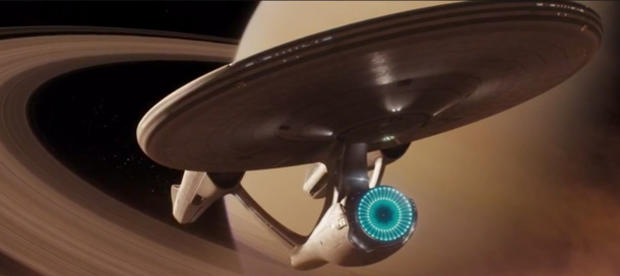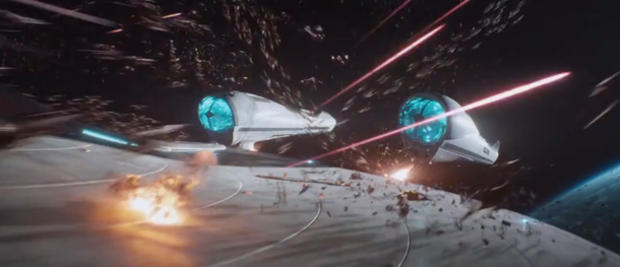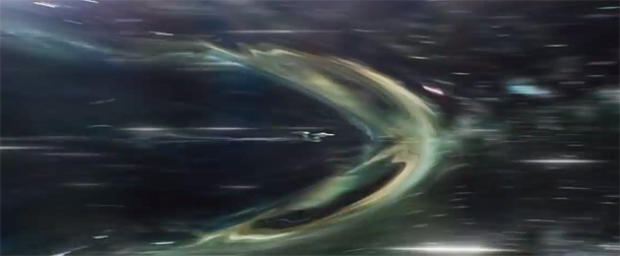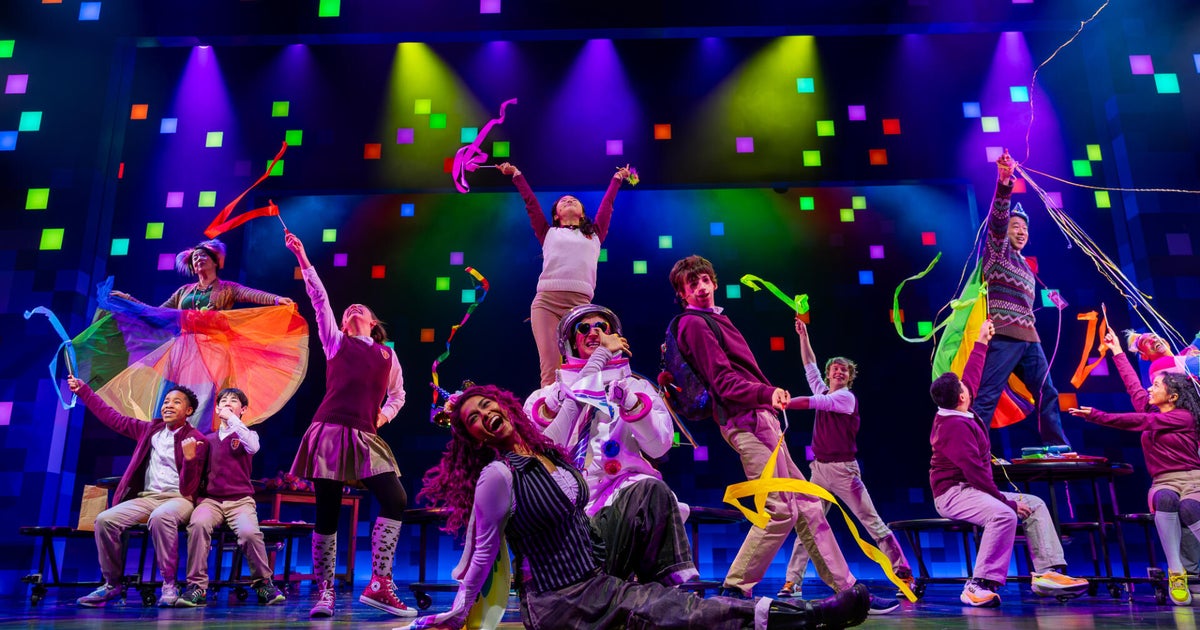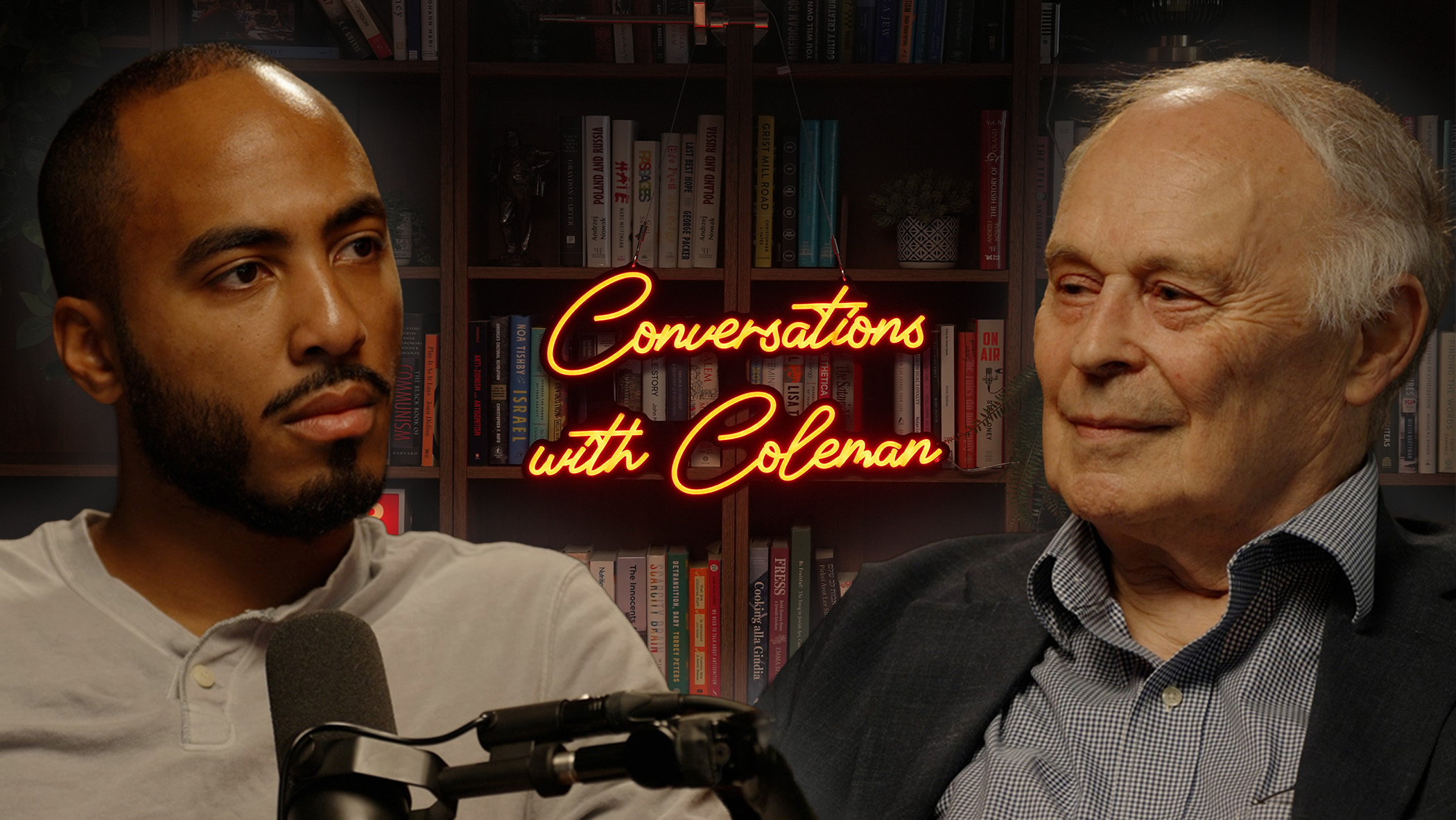Evolution of the Starship Enterprise
One of the most beautifully-designed and easily-recognizable spaceships in science fiction, the USS Enterprise has graced the TV series and films of the "Star Trek" universe, spanning generations of explorers on their fateful voyages to the furthest reaches of the galaxy.
Through various redesigns, the Enterprise (and sister ships bearing that name) has appeared from the original "Star Trek" series (which debuted on NBC in 1966) to the latest feature film, "Star Trek Beyond" (2016).
By CBSNews.com senior producer David Morgan
Watch original "Star Trek" episodes on CBS All Access
News series, "Star Trek" Discovery," debuts on CBS All Access January 2017
Concept Art
In 1964 Gene Roddenberry produced a pilot for a new science fiction television titled "Star Trek," about the crew of an interplanetary spaceship going where no one had gone before.
Matt Jefferies, a mechanical and aviation artist, designed the exterior and interior of the Enterprise, as well as many of the show's props.
Left: An early concept drawing of the ship. Both Jefferies and Roddenberry wanted to depict a 23rd century ship unlike any rocket previously seen.
Concept Art
Early concepts of the Starship Enterprise by Matt Jefferies. In order to avoid a "flying saucer" look, Jefferies explored using a ball shape for the main section, but the shape eventually flattened out until it became a saucer nonetheless.
He also believed that, in order to power the ship across the galaxy, the Enterprise's engines would have to be extremely powerful and thus set apart from the main body of the ship, resulting in the twin nacelles.
Concept Art
The basic form of the Enterprise came together in this Matt Jefferies illustration, which was approved by Roddenberry.
Blueprint
A blueprint of the Starship Enterprise.
FX Filming
Three-foot and eleven-foot models of the Enterprise were created to use in special effects filming by Howard Anderson Company.
Publicity Shot
A promotional photo of the Enterprise model, photographed with a cloud background. The Enterprise did actually appear in Earth's sky, in the time travel episode, "Tomorrow Is Yesterday."
Effects Shot
The Starship Enterprise in orbit.
Effects Shot
An effects shot of the Enterprise from the original "Star Trek" TV series.
Restoration
After the series was cancelled, the main model used in effects photography was donated to the Smithsonian. It has recently undergone a five-year restoration, the subject of a new Smithsonian Channel documentary, "Building Star Trek" (premiering September 4).
Smithsonian
The restored model of the Enterprise is currently on display in the Boeing Milestones of Flight Hall at the Smithsonian's National Air and Space Museum in Washington, D.C.
"Star Trek: Phase II"
In the mid-1970s, years after "Star Trek" had been cancelled, the show's growing popularity from the airing of reruns in syndication prompted Paramount to plan a follow-up series, "Star Trek: Phase II." Artist Ralph McQuarrie created this redesign of the Enterprise.
With the success of "Star Wars," plans for a "Star Trek" revival were shifted to a theatrical feature.
"Star Trek: The Motion Picture"
The Starship Enterprise in "Star Trek: The Motion Picture" (1979). While keeping the basic design, the ship was retrofitted to look sleeker and more detailed on the big screen.
"Star Trek: The Motion Picture"
The dome of the Enterprise, housing the ship's bridge.
"Star Trek: The Motion Picture"
The nacelles visible as the Enterprise leaves drydock in "Star Trek: The Motion Picture."
"Star Trek III: The Search for Spock"
In "Star Trek III: The Search for Spock" (1984), Kirk and crew steal the Enterprise from spacedock.
Toe to Toe
The Enterprise encounters a Klingon Bird-of-Prey in "Star Trek III: The Search for Spock." Kirk's decision to self-destruct his ship rather than allow it to fall into enemy hands, and the ship's death spiral into the atmosphere of the planet Genesis, was a sad sight for Trek fans.
"Star Trek: Generations"
As the film series continued in "Star Trek IV: The Voyage Home" (1986), Admiral Kirk was awarded a new starship, the Yorktown, renamed Enterprise NCC-1701-A. It would survive for two more movies starring the original cast, before the feature films transitioned to the cast of the TV spin-off series, "Star Trek: The Next Generation."
Model
Fans in Germany examine a movie model of the Starship Enterprise on the "Star Trek World Tour" Sunday, December 6,1998 in Duesseldorf.
"Star Trek: Generations"
The TV spin-off, "Star Trek: The Next Generation," featured the Starship Enterprise NCC-1701-D, piloted by Captain Jean Luc Picard. Designed by Andrew Probert and built by Industrial Light & Magic, it was slightly modified for the 1994 movie, "Star Trek: Generations," the first theatrical film to feature the "Next Generation" crew.
Not that it lasted long: in the course of the story, the saucer separated from the engineering hull and crashed onto the planet Veridian III.
"Star Trek: First Contact"
For the follow-up film, "Star Trek: First Contact," John Eaves (who had worked in the "Deep Space Nine" art department) redesigned the "Next Generation" crew's Sovereign-class ship - bigger and sleeker (like the Excelsior class ships that were a technological advance from the Enterprise class ships), yet more compact (the saucer is built into the body below).
"Star Trek: Enterprise"
In the extended "Star Trek" universe, there were other ships named Enterprise, including the 22nd century interstellar ship Enterprise (NX-01) that was featured in the 2001-2005 series, "Star Trek: Enterprise." Designed by Doug Drexler, it was created using CGI rather than model construction.
"Star Trek" (2009)
With J.J. Abrams' 2009 reboot, "Star Trek," depicting the inaugural voyage of the Enterprise, an Iowa farm boy - one James Tiberius Kirk - watches as the starship is being constructed at a Federation shipyard.
Warp Drive
Though the shape of the original series' ship was retained, the "hot rod" styling of the 2009 Enterprise was sleeker, as well as souped-up - the warp drive engines featured moving parts, which added to the sense of power.
The Rings of Saturn
Industrial Light & Magic created photorealistic models of the ship, designed by Ryan Church, Joseph Hiura and Alex Jaeger.
"Star Trek Beyond"
In “Star Trek Beyond” (2016), the look of the Enterprise was made even more sleek, with slimmer engine nacelles.
To Infinity ... and Beyond
The Enterprise in warp drive.
For more info:
”Star Trek Beyond” (official site)
Memory Alpha (Star Trek wiki)
